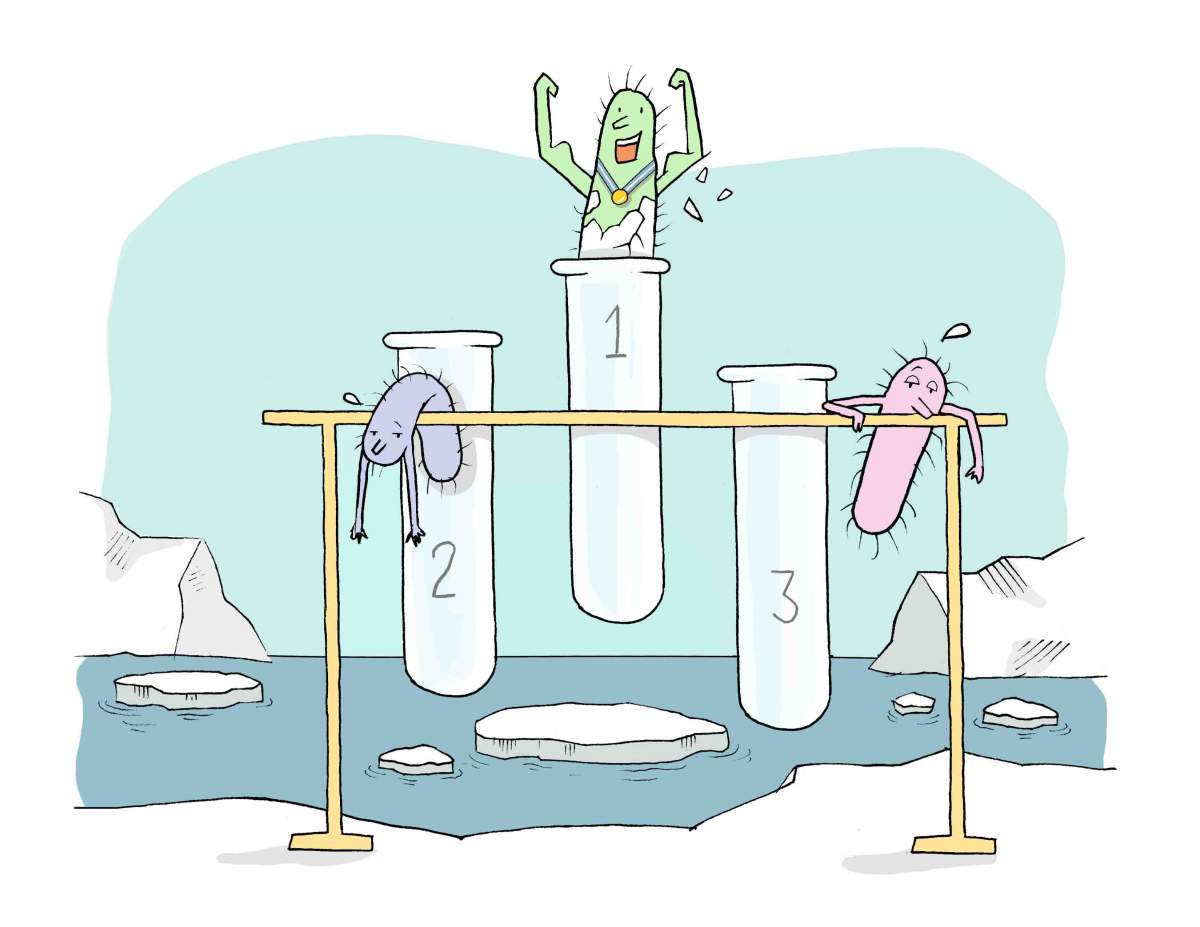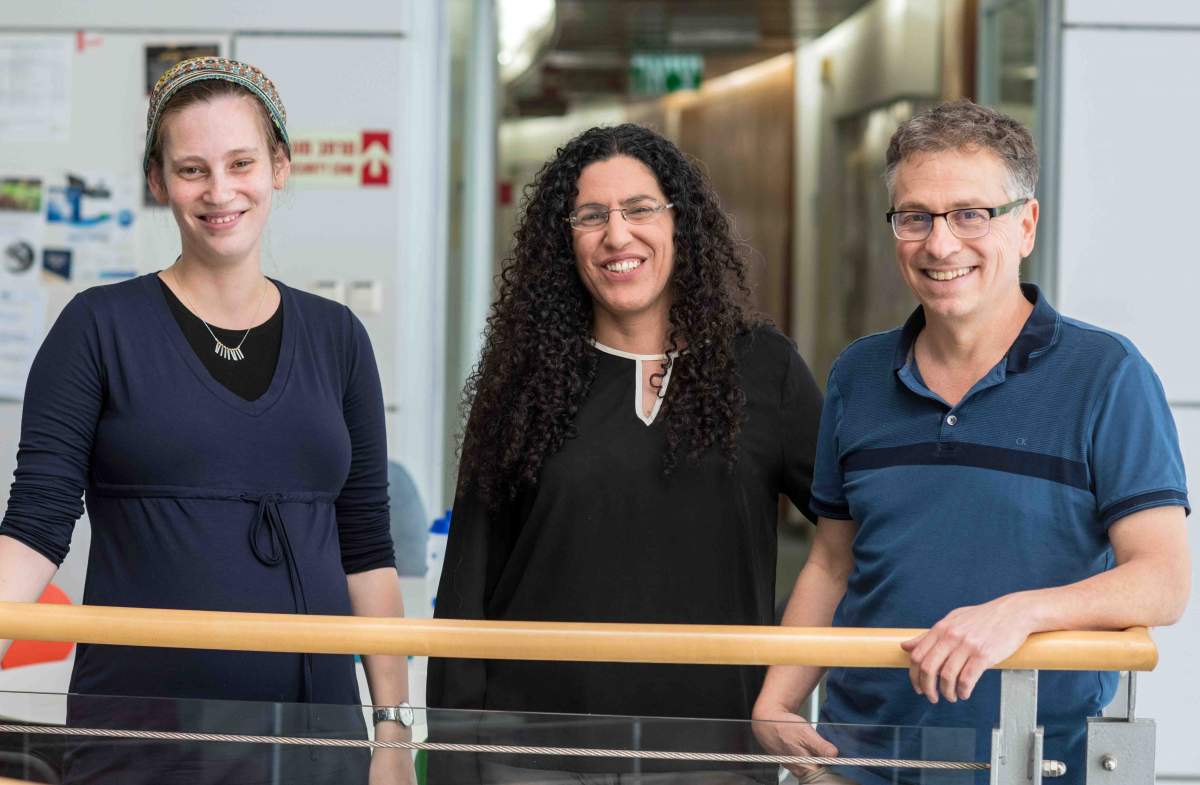The principles of test-tube evolution may guide further biotechnology research

Evolution involves competition: It is a real-life game of “Survivor,” in which those that adapt the best get to live and reproduce. It’s a fascinating game, but for scientists, there is just one drawback – the real drama takes place on timescales much longer than a human life. Nonetheless, there are organisms with short lifespans – for example, bacteria and yeast – that can afford researchers the opportunity to observe the changes that take place over many generations.
Sol Spiegelman first demonstrated the principle of evolution in the lab in the 1960s, causing an RNA molecule to evolve a shorter and shorter chain. Richard Lenski took the idea of observing bacterial evolution to a new level: His experiment with successive generations has been running for over 30 years.
Prof. Yitzhak (Tzachi) Pilpel, Staff Scientist Dr. Orna Dahan and research student Sivan Kaminski-Strauss of the Molecular Genetics Department at the Weizmann Institute of Science decided to kick the idea up a notch by turning the evolutionary competition into a different kind of competition: They challenged labs that conduct “test-tube evolution” to a contest. The groups – around 30 in all – were each provided with a starting culture of either E. coli bacteria or baker’s yeast, and each lab’s supply was labeled with a genetic “barcode” for later identification. The challenge was to get the microorganisms to adapt to a colder environment than their normal one.
Three months later, the groups sent back to Pilpel’s lab in the Institute those bacterial populations that had adapted to the conditions in their labs. Pilpel and his group then staged two tournaments, one for the bacteria and one for the yeast. The different strains were put together in cold conditions and those that had been “well-trained” for lower temperatures – the contests’ survivors – were the winners.

(l-r) Sivan Kaminski-Strauss, Dr. Orna Dahan and Prof. Yitzhak (Tzachi) Pilpel
First place in the bacterial event went to research student Yinon Bar-On in the Weizmann Institute lab of Prof. Ron Milo of the Plant and Environmental Sciences Department. His bacteria were conditioned to express different levels of a gene for replicating DNA, but one that does it in a sloppy way, letting in mistakes. This strategy, when targeted to the right level, was a shortcut to obtaining random mutations, some of which helped the bacteria survive and reproduce better in the cold. Second place went to a lab in Kiel University, Germany, led by Prof. Tal Dagan and research student Tanita Wein. Their bacteria had undergone many rounds of competition between different populations, the best in each round continuing to the next level while the others were allowed to die out.
In the yeast competition, three teams tied for first place. These were from Harvard University, the European Molecular Biology Laboratory (EMBL) and Tel Aviv University. Each of the teams used a different strategy involving the sexual reproduction of the yeast, pairing them with various natural strains and selecting the most successful ones.
Changing the rules
Up to this point, things had gone as planned. But survival, as we know from everyday life, sometimes depends on an organism’s ability to deal with the unplanned surprise. So Pilpel and his group added some bonus rounds to the competition, pitting the organisms against one another in colder temperatures than those stipulated in the rules the competing labs had been given. Another round of the “Survivor” competition did not change the temperature, but rather put the microorganisms in conditions that were highly saline.
“We wanted to see if the ‘training’ each of the strains had undergone in the various labs prepared them for the specific condition we had set, or whether they had generally toughened up, enabling them to deal with other hardships as well,” says Pilpel.
Survival sometimes depends on an organism’s ability to deal with the unplanned surprise
For the yeast, the strains that had won in the original tournament came through again, apparently due to the ways their genes had mixed in round after round of sexual reproduction. But for bacteria, the picture was much murkier: In some of the conditions none came out on top, while in others the ranking changed.
This led to the conclusion that evolutionary pressures act differently on creatures that reproduce asexually, like bacteria, and those that reproduce sexually, like yeast and most multi-celled organisms, including humans. The random genetic mutations that are preserved through natural selection may be beneficial to the bacteria in particular conditions, but they may be unhelpful or even harmful in others. By contrast, sexual reproduction produces greater genetic diversity by mixing genes in each generation, providing a larger range of possible coping mechanisms when new conditions arise.
The scientists say that the experiment has now provided researchers studying evolution with new perspectives and new inspiration for further experimentation in the area of test-tube evolution. And the methods pursued by the different labs, as well as those created for the rounds of the competition, could, in the future, be used in the field of biotechnology to direct research toward desired results.
Prof. Yitzhak Pilpel’s research is supported by the David and Fela Shapell Family Center for Genetic Disorders Research; the Azrieli Institute for Systems Biology; the Leo and Julia Forchheimer Center for Molecular Genetics; the Sharon Zuckerman Laboratory for Research in Systems Biology’ the estate of Emile Mimran; and the European Research Council. Prof. Pilpel is the incumbent of the Ben May Professorial Chair.

Recent Comments